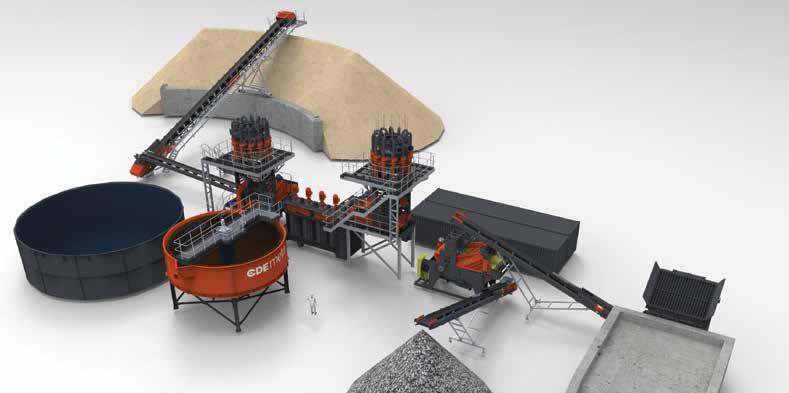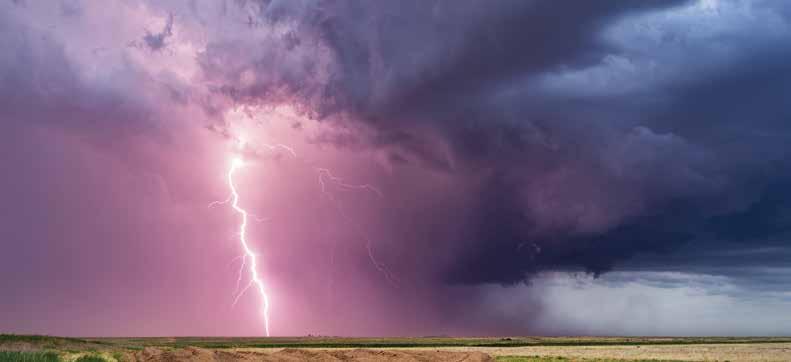Working at heights
Putting a stop to dropped objects DROPS PREVENTION EXPERT DROPSAFE HAS EXPANDED ITS SAFETY MISSION IN AUSTRALIA THROUGH A NEW PARTNERSHIP. SAFE TO WORK REPORTS.
D
ropped objects pose a significant safety risk at mine sites. Safe Work Australia found in 2017 that eight per cent of work-related injuries in Australia were caused by falling objects. Incidents involving dropped objects are such a common occurrence that some firms are exclusively focused on tackling this risk. Dropsafe has been mitigating dropped object risks in the workplace with its product range for more than 20 years. The company identifies four major threats associated with dropped objects, including the risk of injury or fatality to personnel, the risk of damage to equipment, as well as financial and reputational consequences. The last two categories, while perhaps less obvious, are becoming an increasingly important consideration for miners. The legal ramifications that arise from workplace fatalities and injuries result in considerable cost to a mine’s perception and bottom line. Dropsafe commercial director Mike Rice believes firms that cannot show they are prioritising the safety of their
personnel by investing in dropped object prevention systems face significant commercial risks. “Dropped objects do not simply threaten personnel, the equipment they are using and the finances of the site owner; they also pose a significant threat to the reputation of businesses, both large and small,” Rice says. “Safety performance is highly scrutinised and is increasingly becoming a crucial consideration in commercial decision-making – particularly in challenging market environments where cost-cutting is commonplace. “To date, an overall lack of standardisation in what constitutes ‘best practice’, coupled with shortfalls and inconsistency in reporting, has posed an obstacle to the adoption of high-quality prevention systems. The tide is turning however, particularly as businesses realise the commercial benefits that go hand-in-hand with a robust safety strategy.” A key dropped object risk is posed by fixtures and fittings that come loose and fall from height in dynamic environments where vibration and
Dropsafe’s barriers can be horizontally or vertically aligned.
SAFETOWORK 26 JUL-SEP 2019
corrosion is common. The Dropsafe Net — made from SUS316 stainless steel and tested to five times product safe working load — is a widely adopted netting solution that surrounds lighting and other fixtures, mitigating the risk of drops. Objects falling from walkways and stairwells, such as handheld tools and equipment, also pose a risk. “Dropsafe has continued to see strong demand worldwide for its products from firms throughout the oil and gas, mining, marine, renewables and industrial supply chains,” Rice continues. “This has resulted in a number of fleet-wide rollouts of the Dropsafe Net as activity has ramped up again in oil and gas, and milestone orders in mining and conventional power for the Dropsafe Barrier, which was recently added to our product range.” The Dropsafe Barrier, in particular, is designed to prevent objects falling from elevated work platforms (EWP), while the Dropsafe Net keeps overhead fixtures in place. The Dropsafe Pouch, which boasts a similar stainless-steel design to the company’s nets (albeit miniaturised by design), holsters handheld equipment such as radios and multimeters by cords that prevent them from falling out of reach. Dropsafe also produces items such as lanyards, securing cables, carabiners and safety shackles, in addition to its main three products. The company formed a distribution partnership with Pacific Automation in May to meet increased











